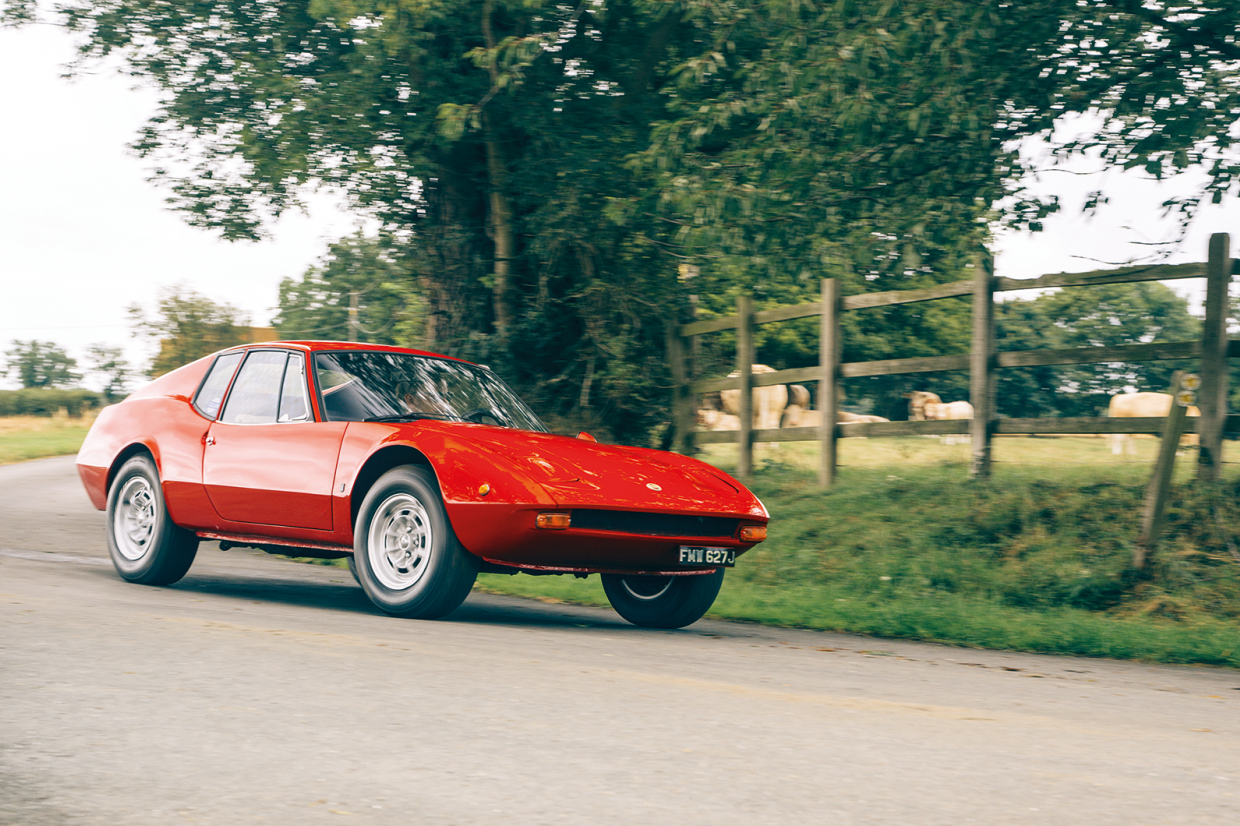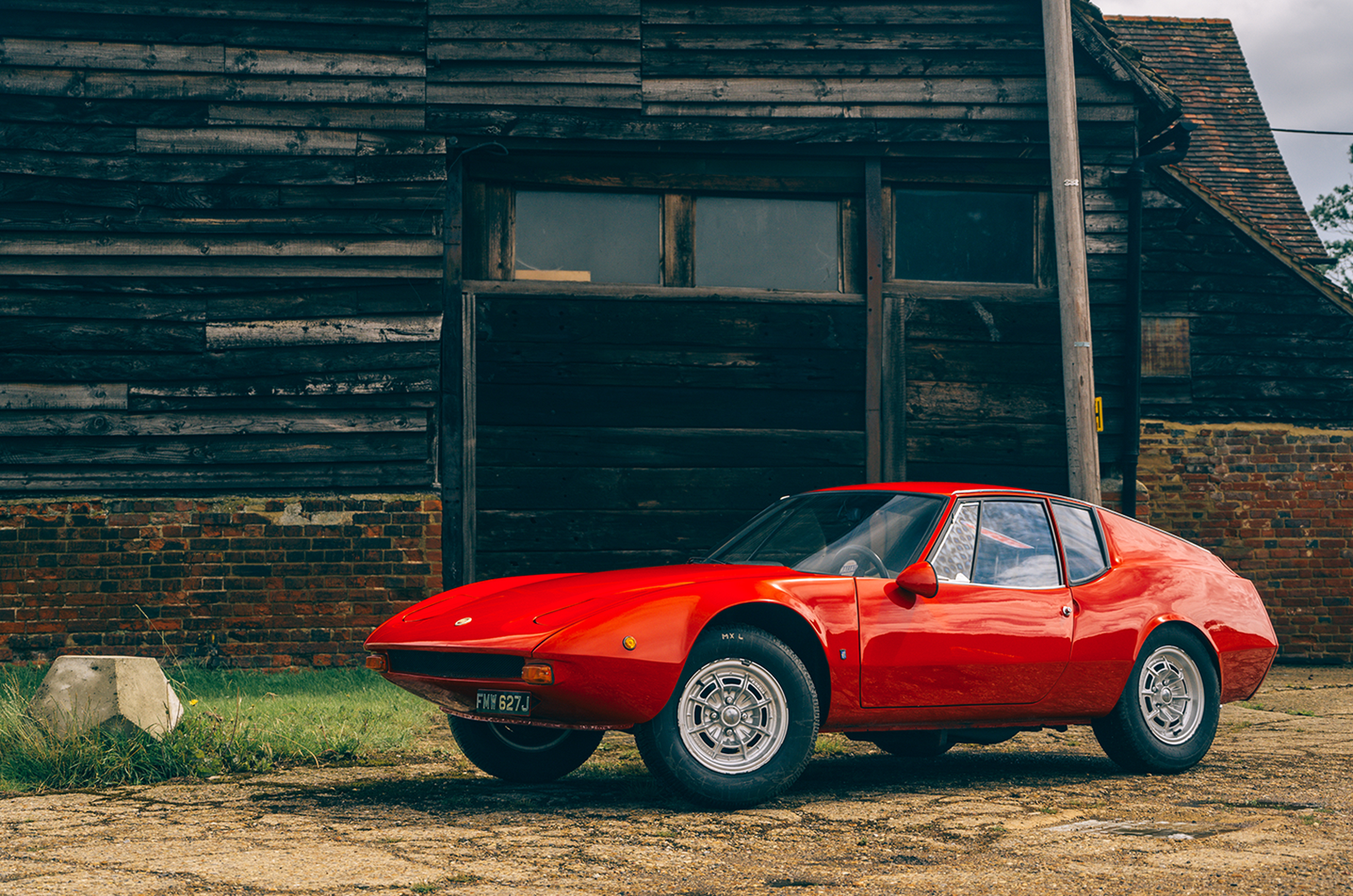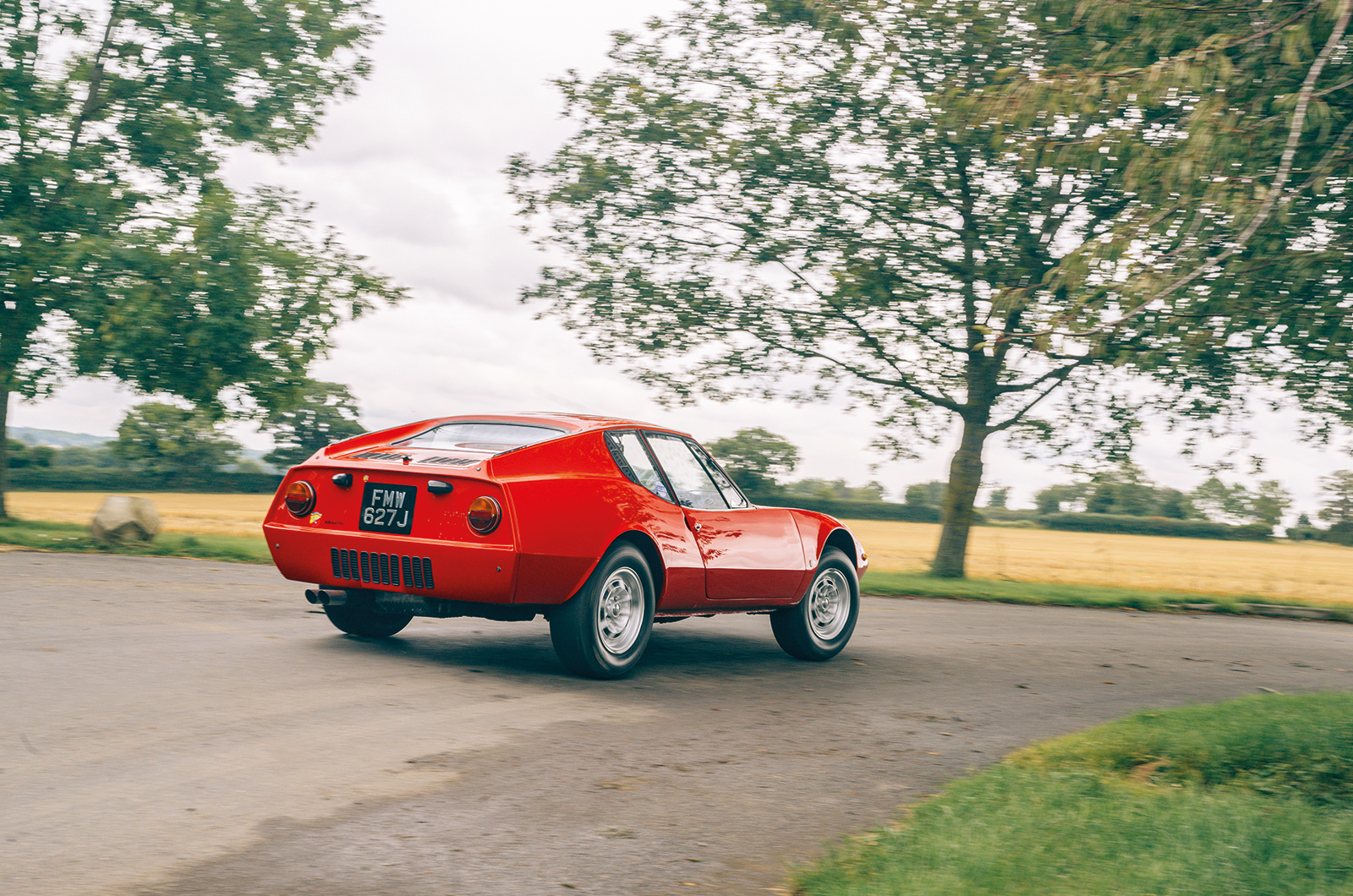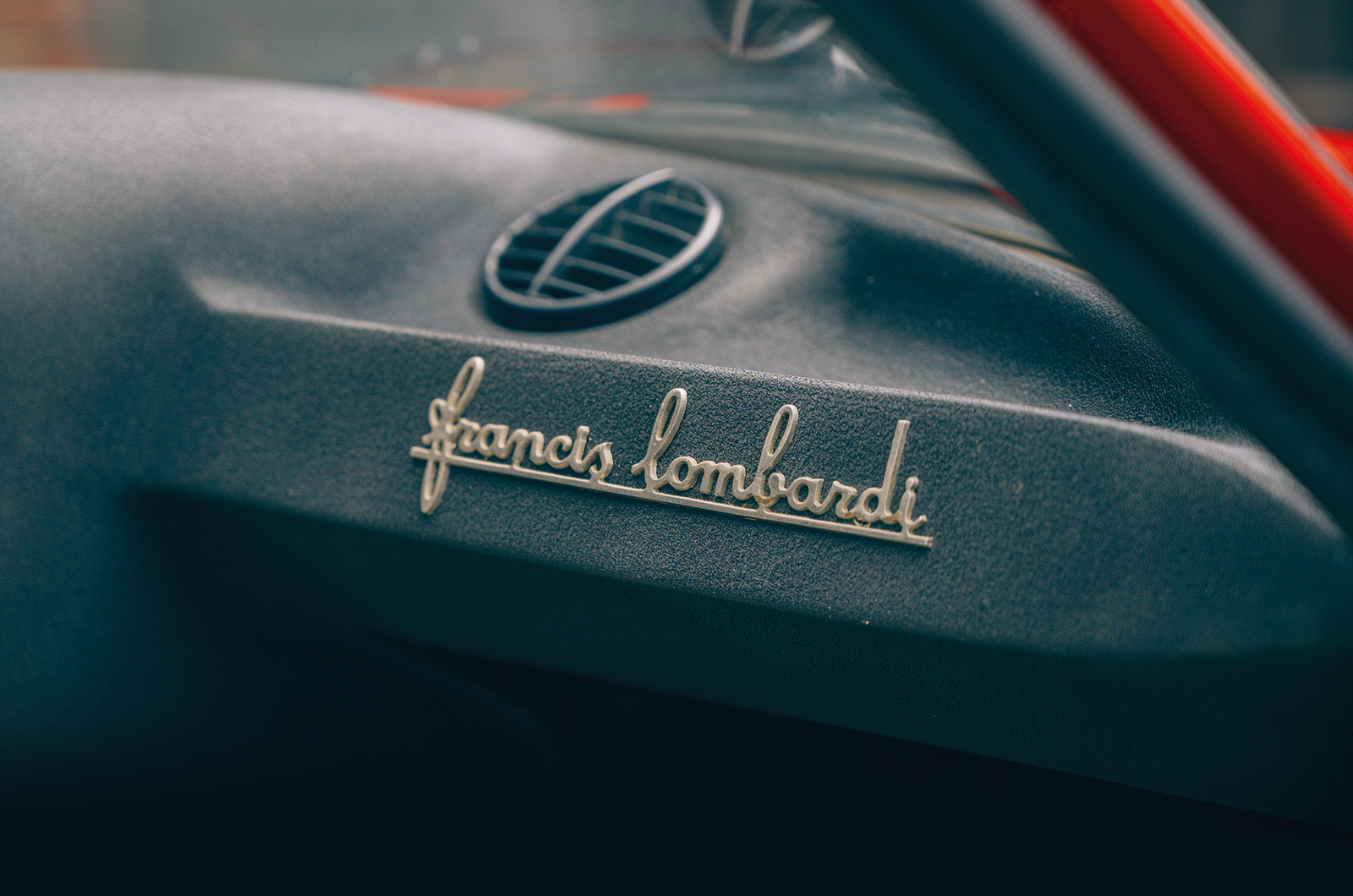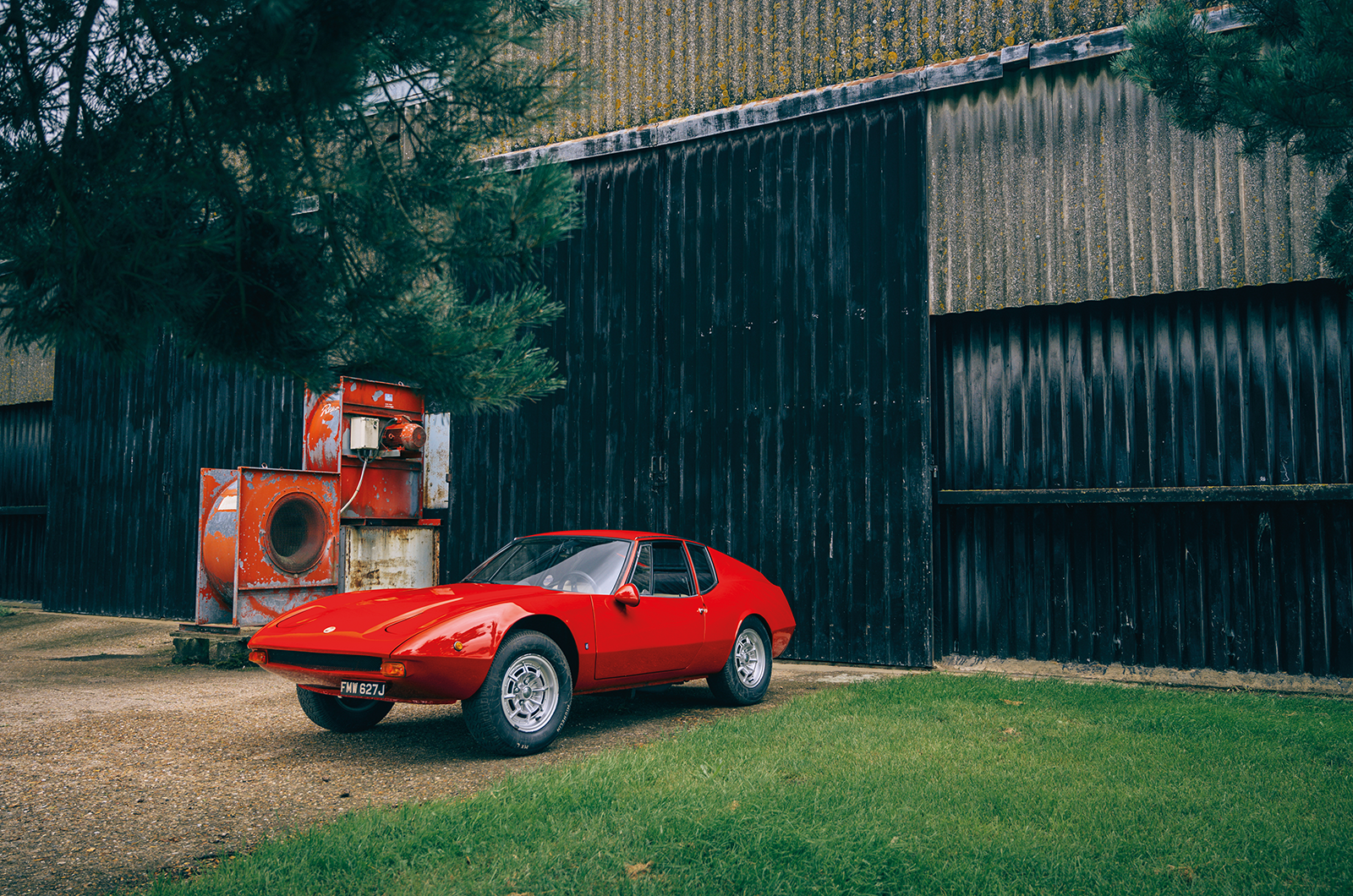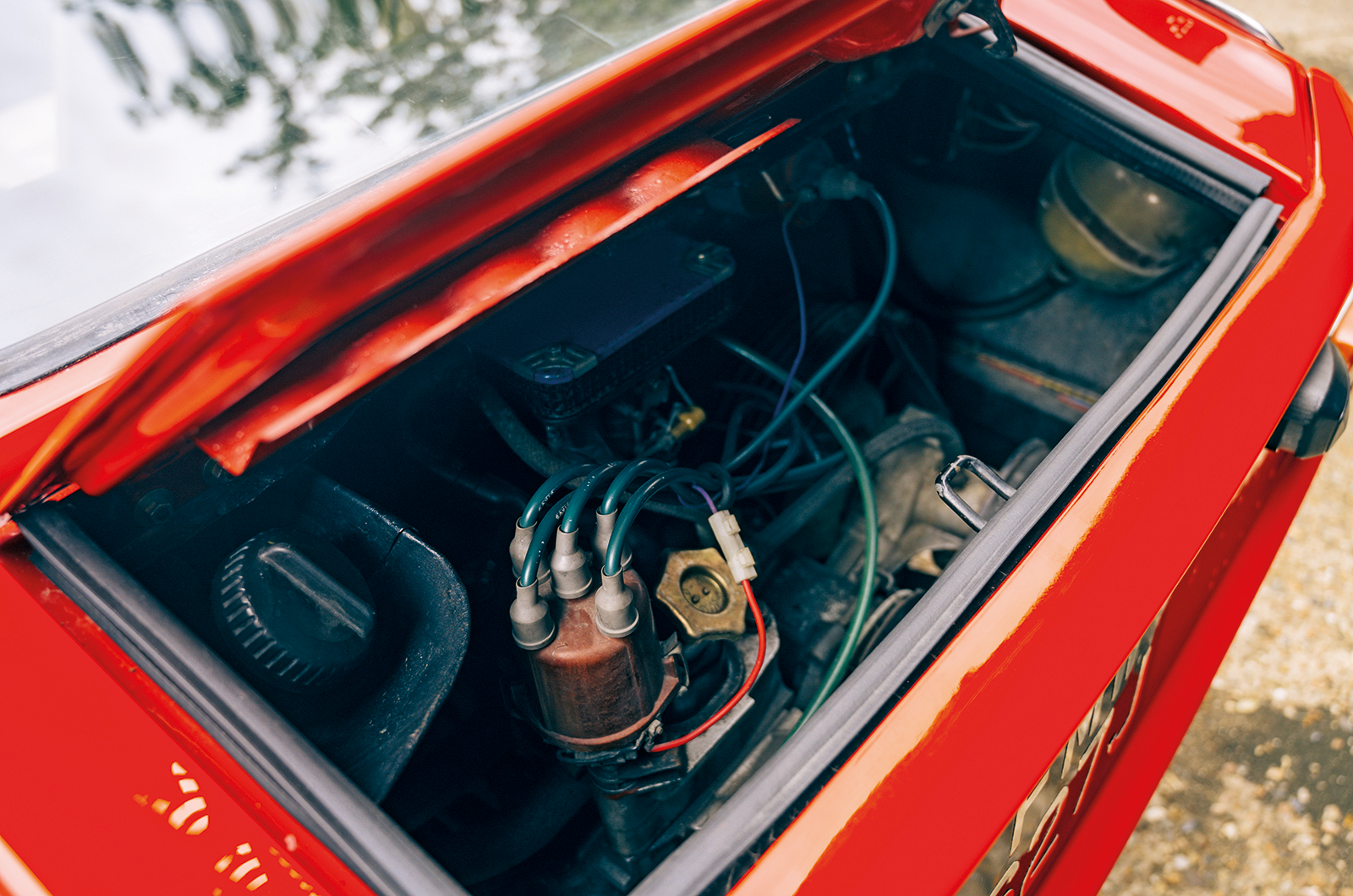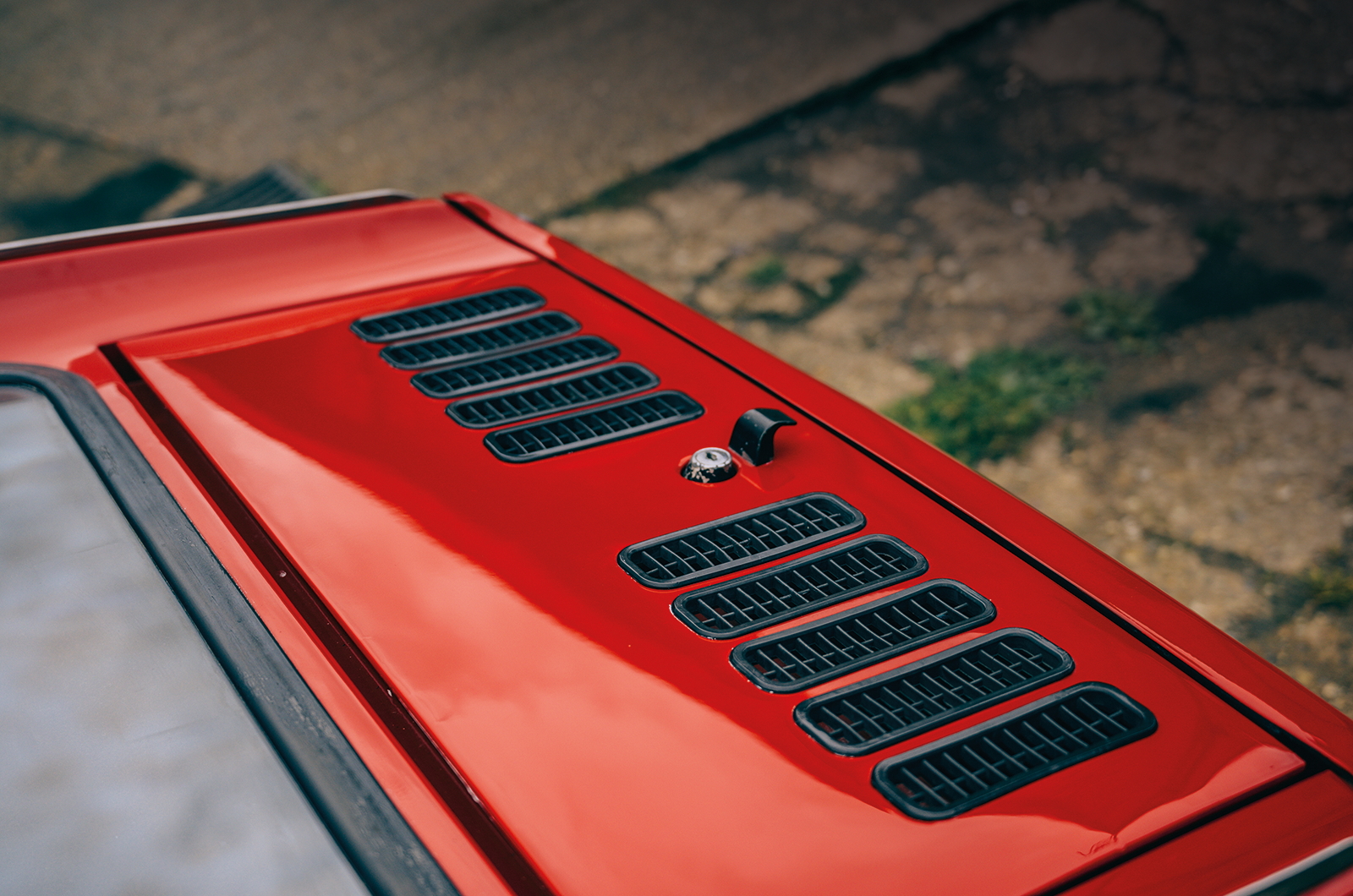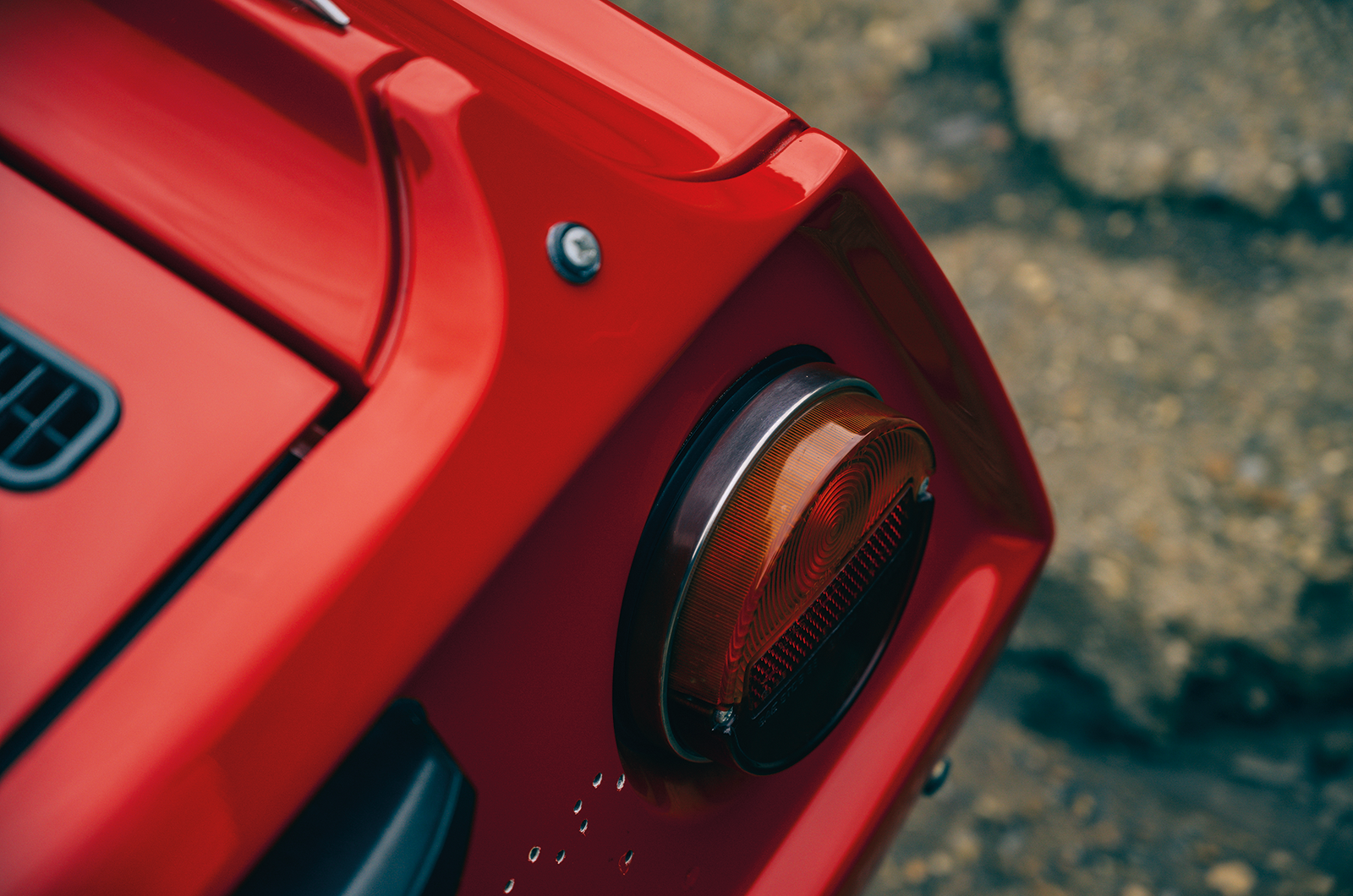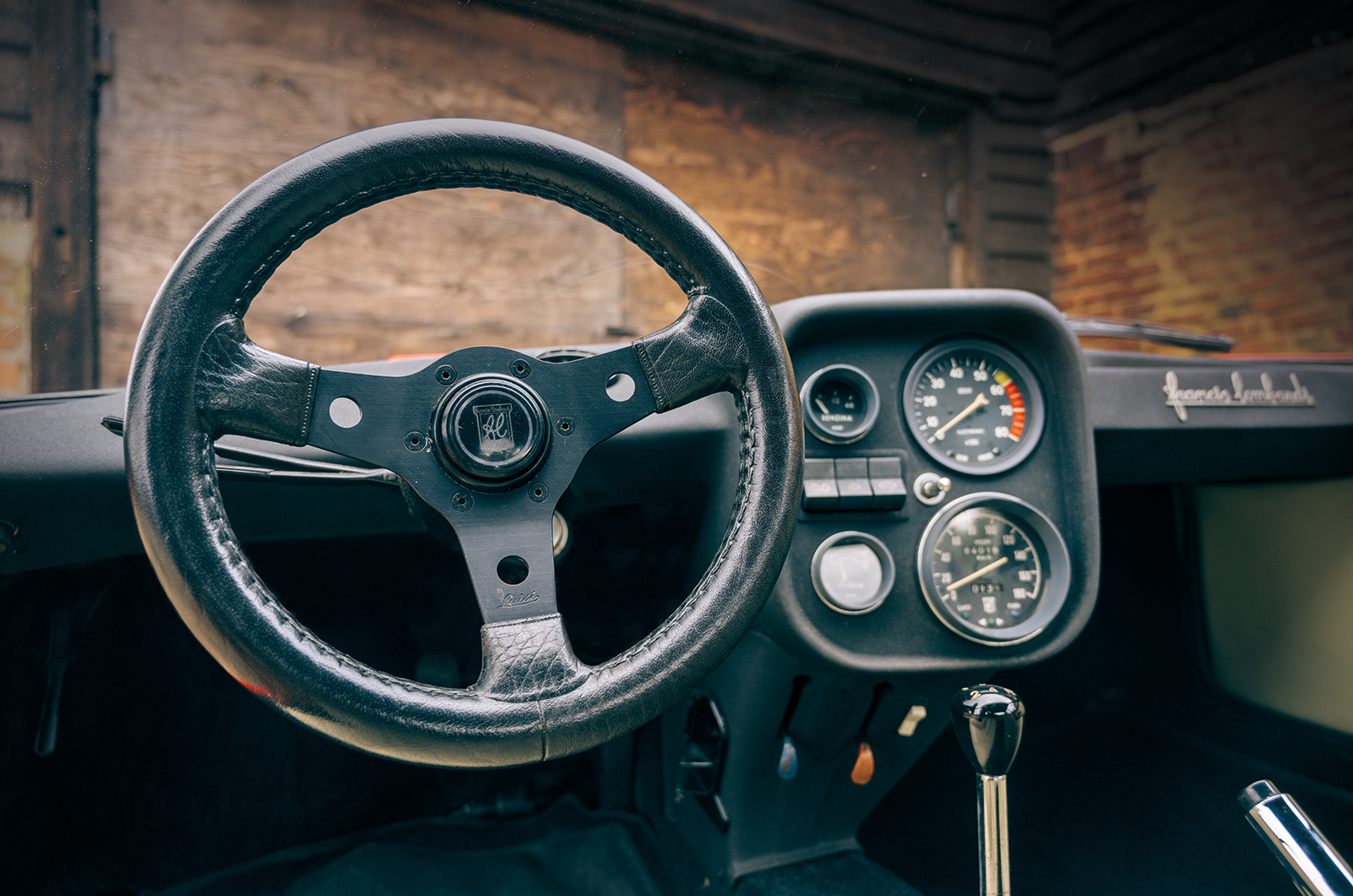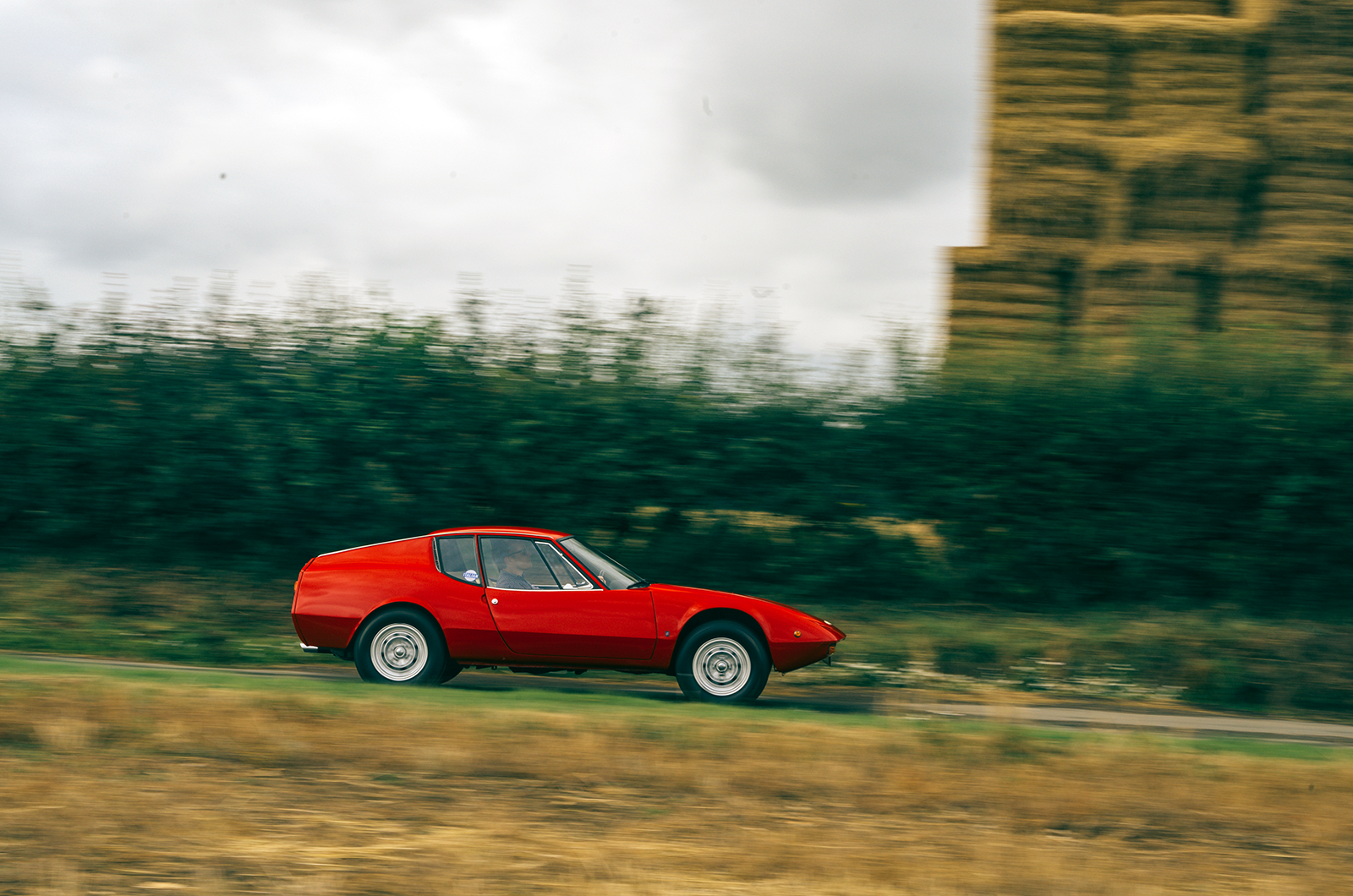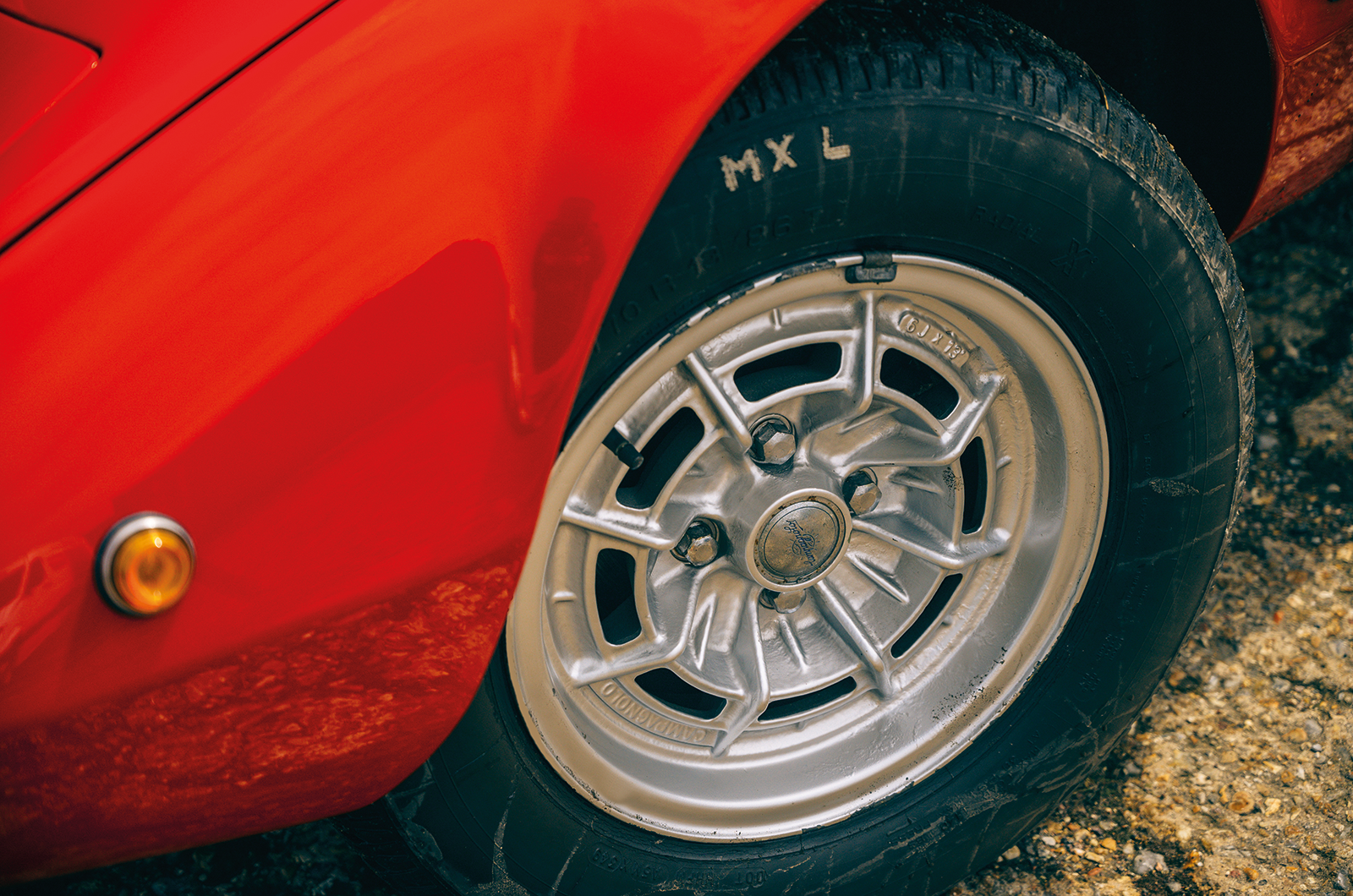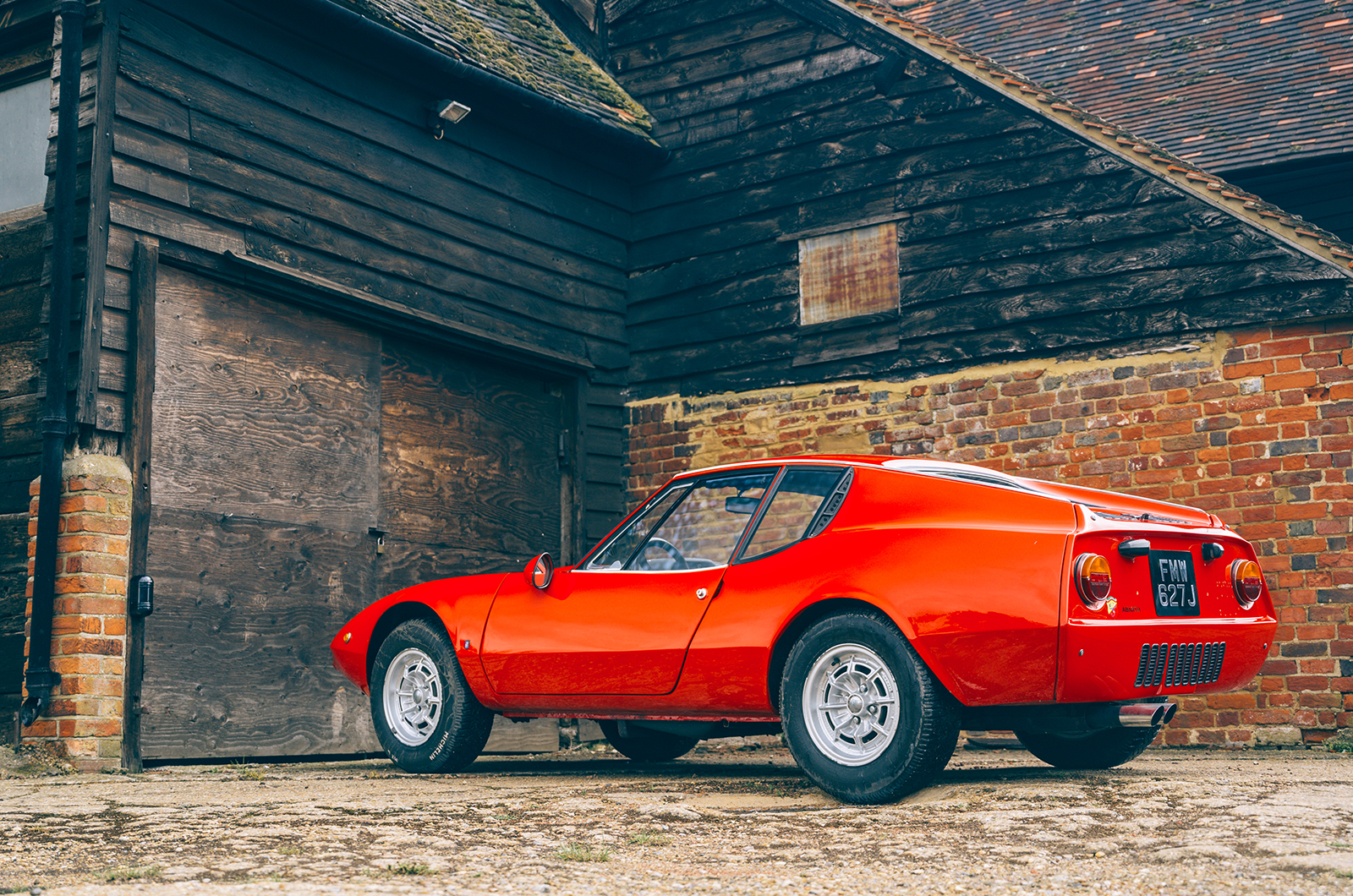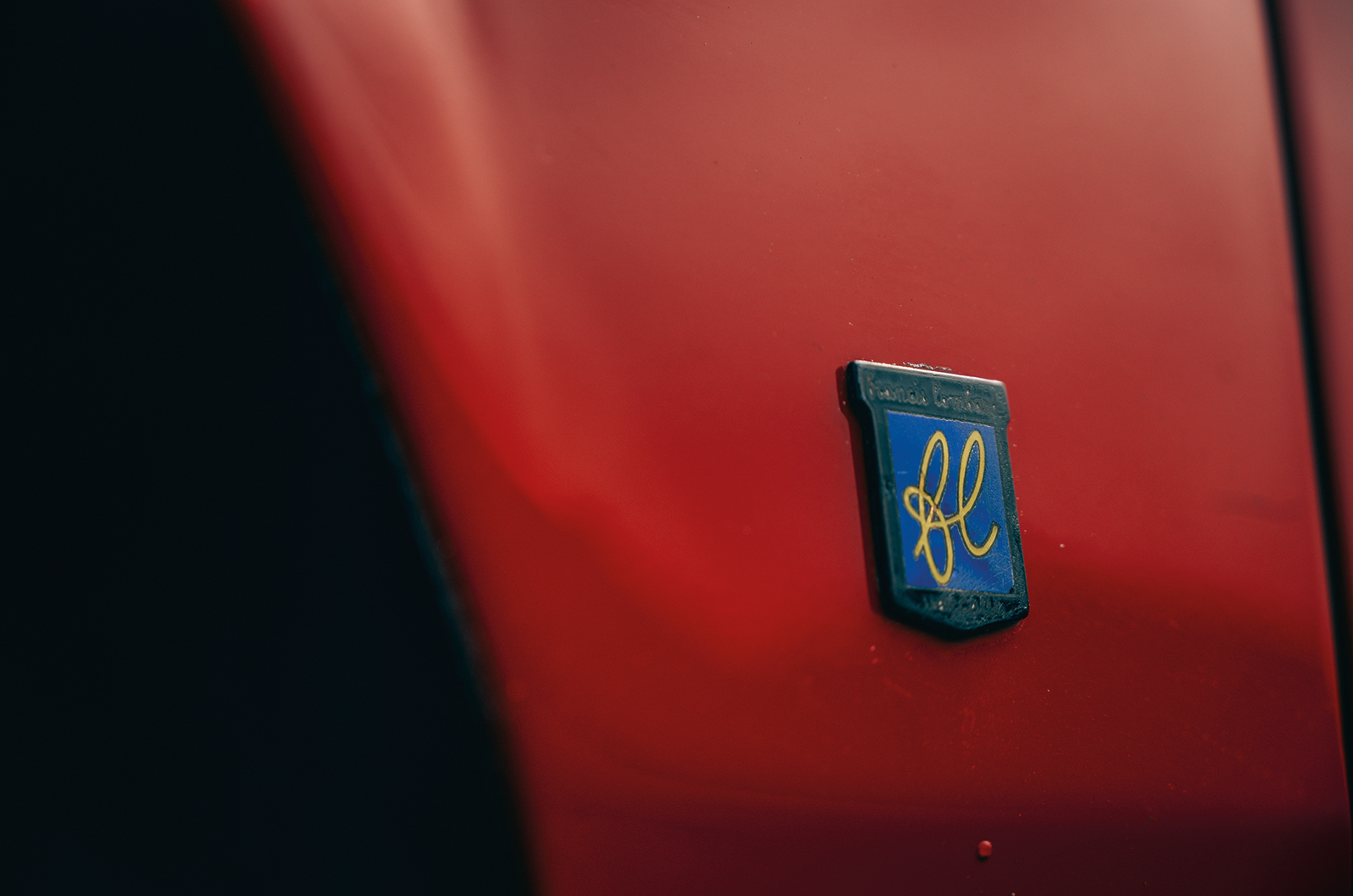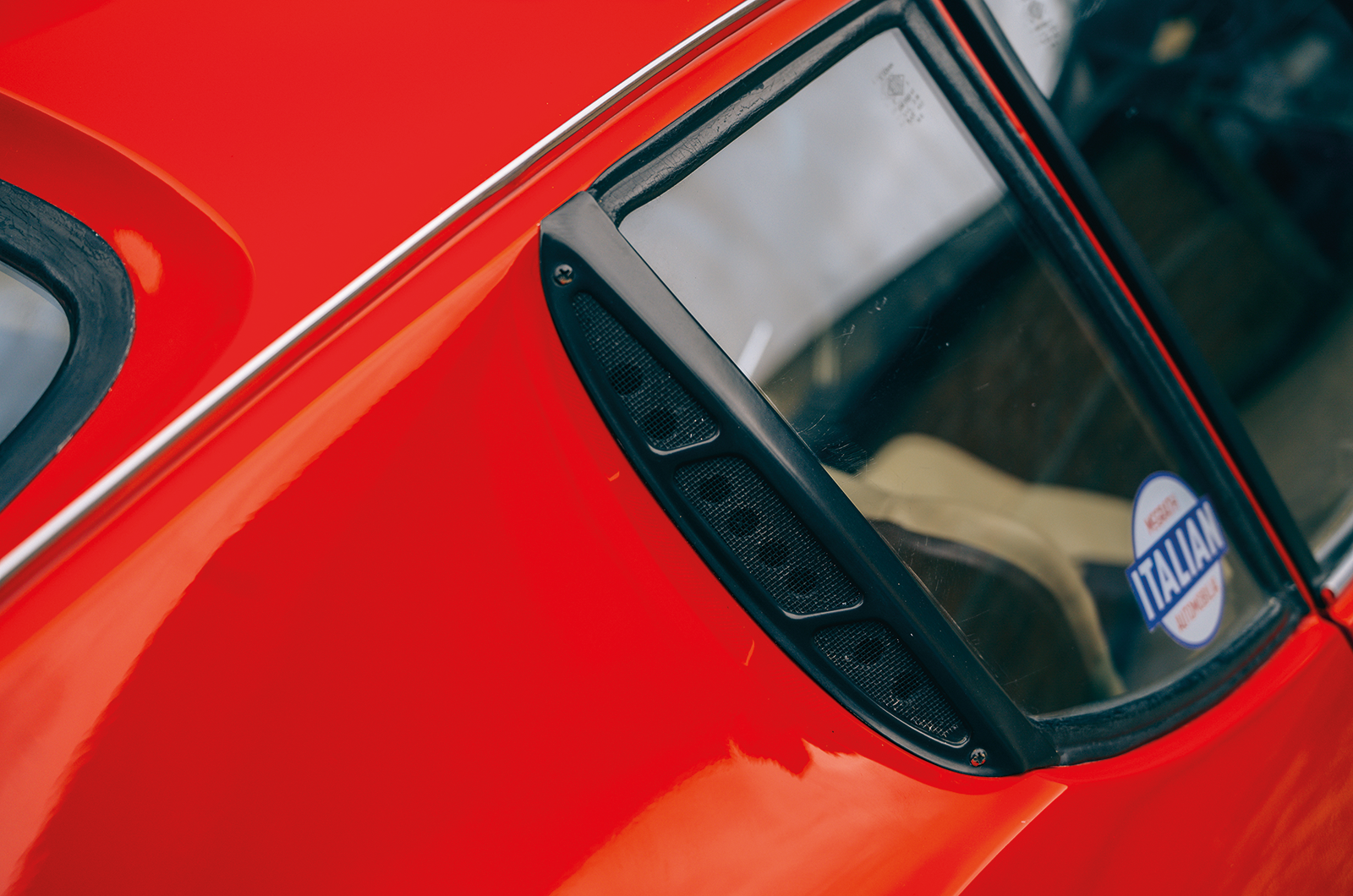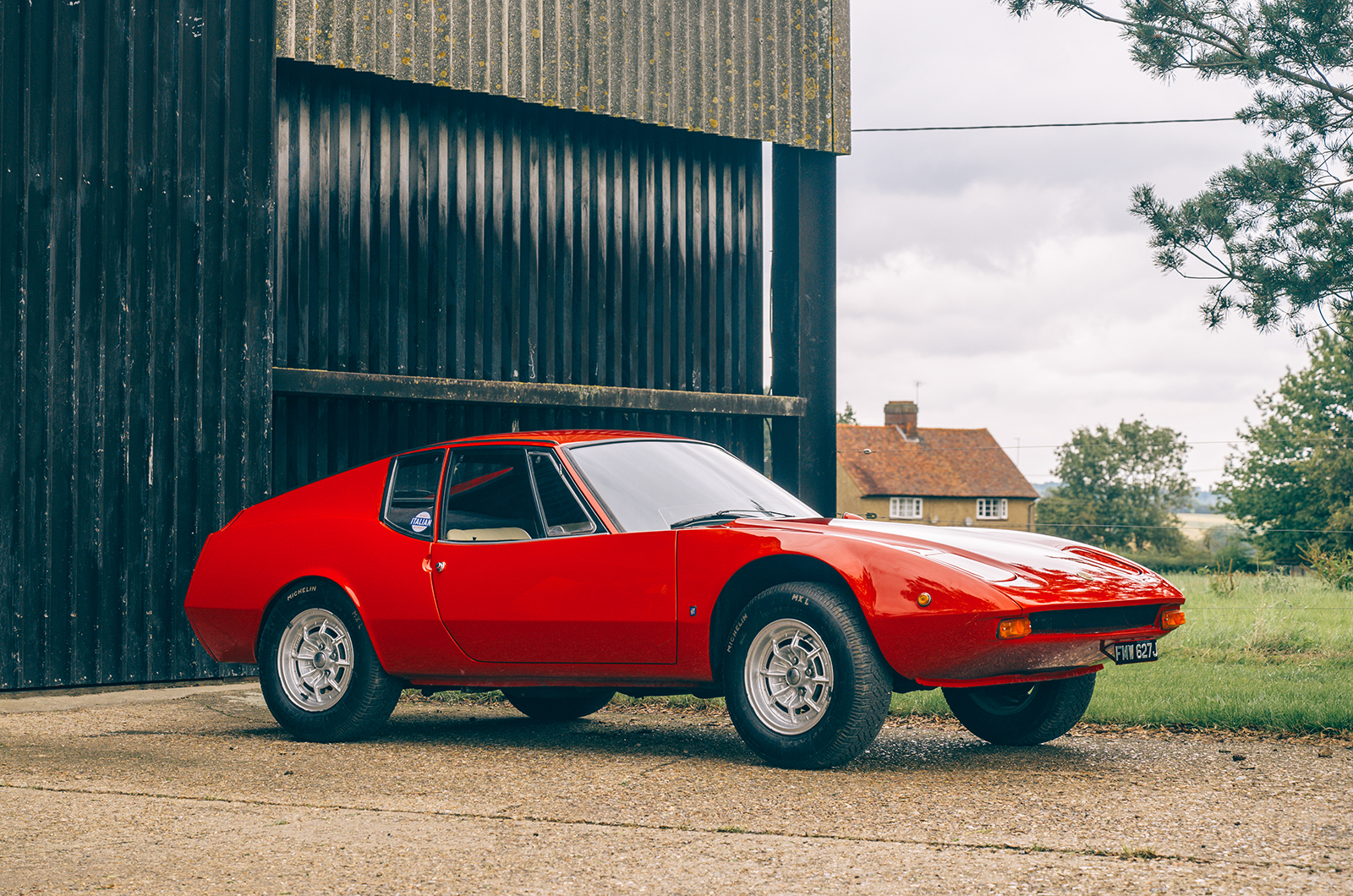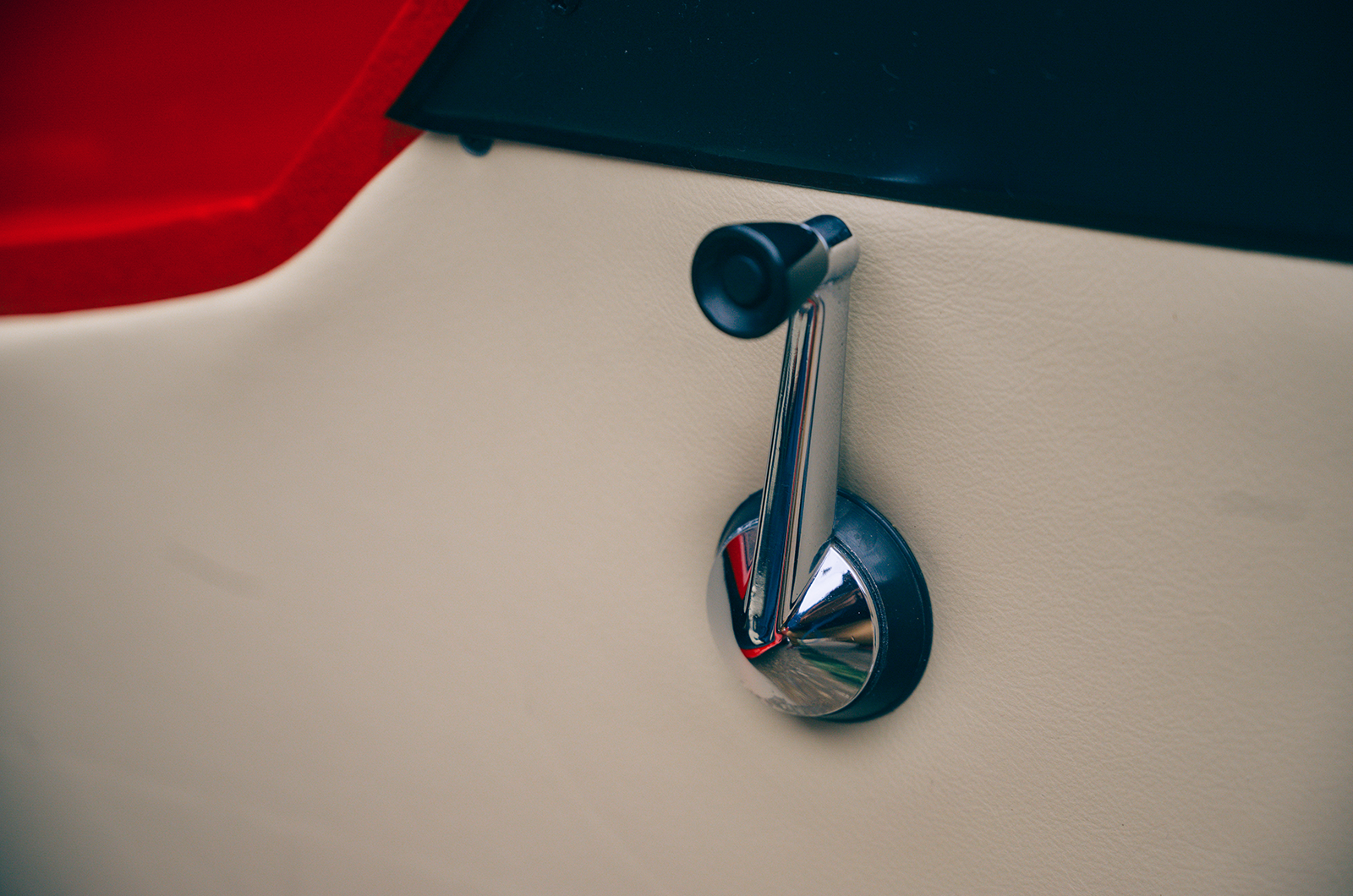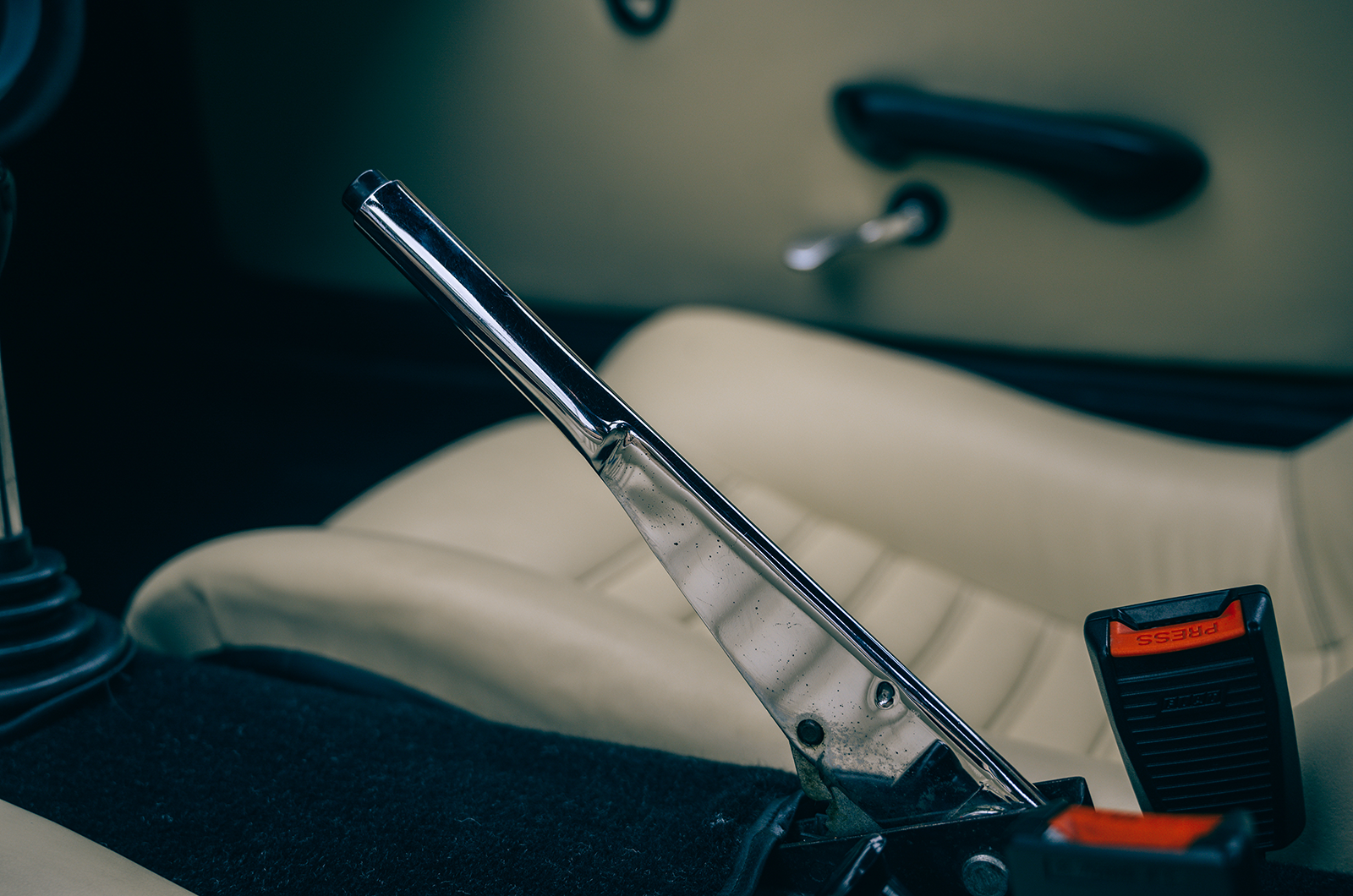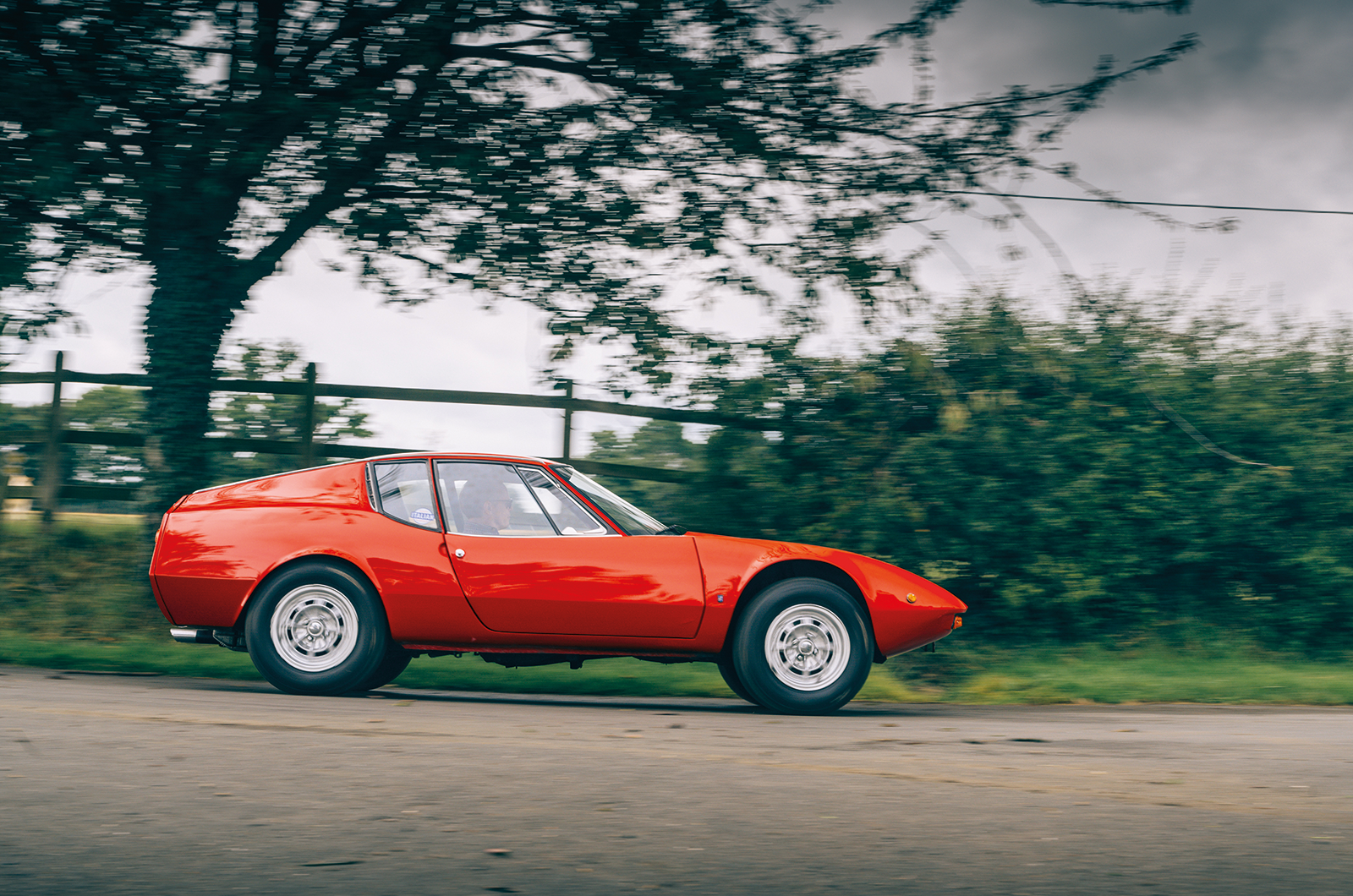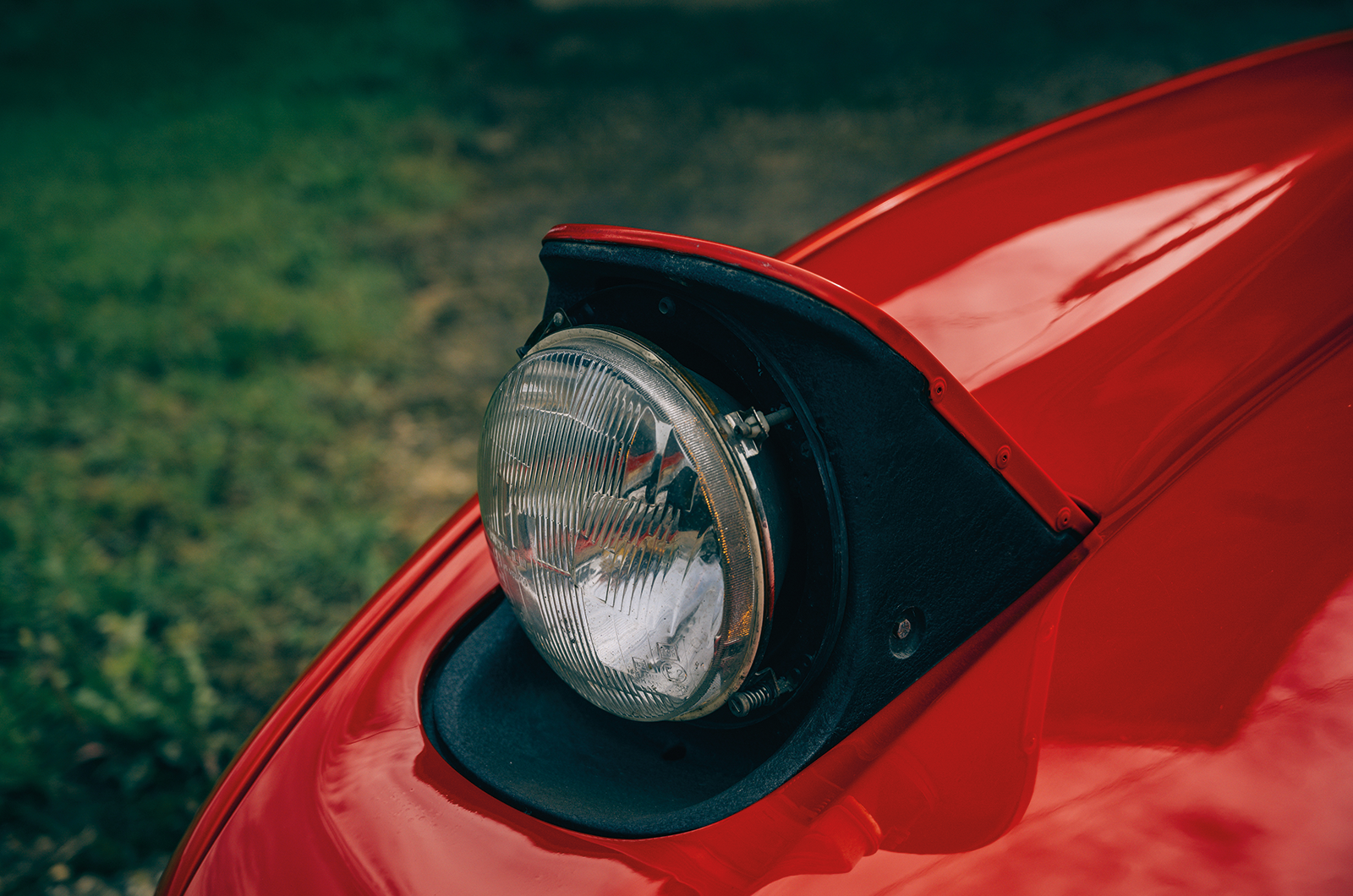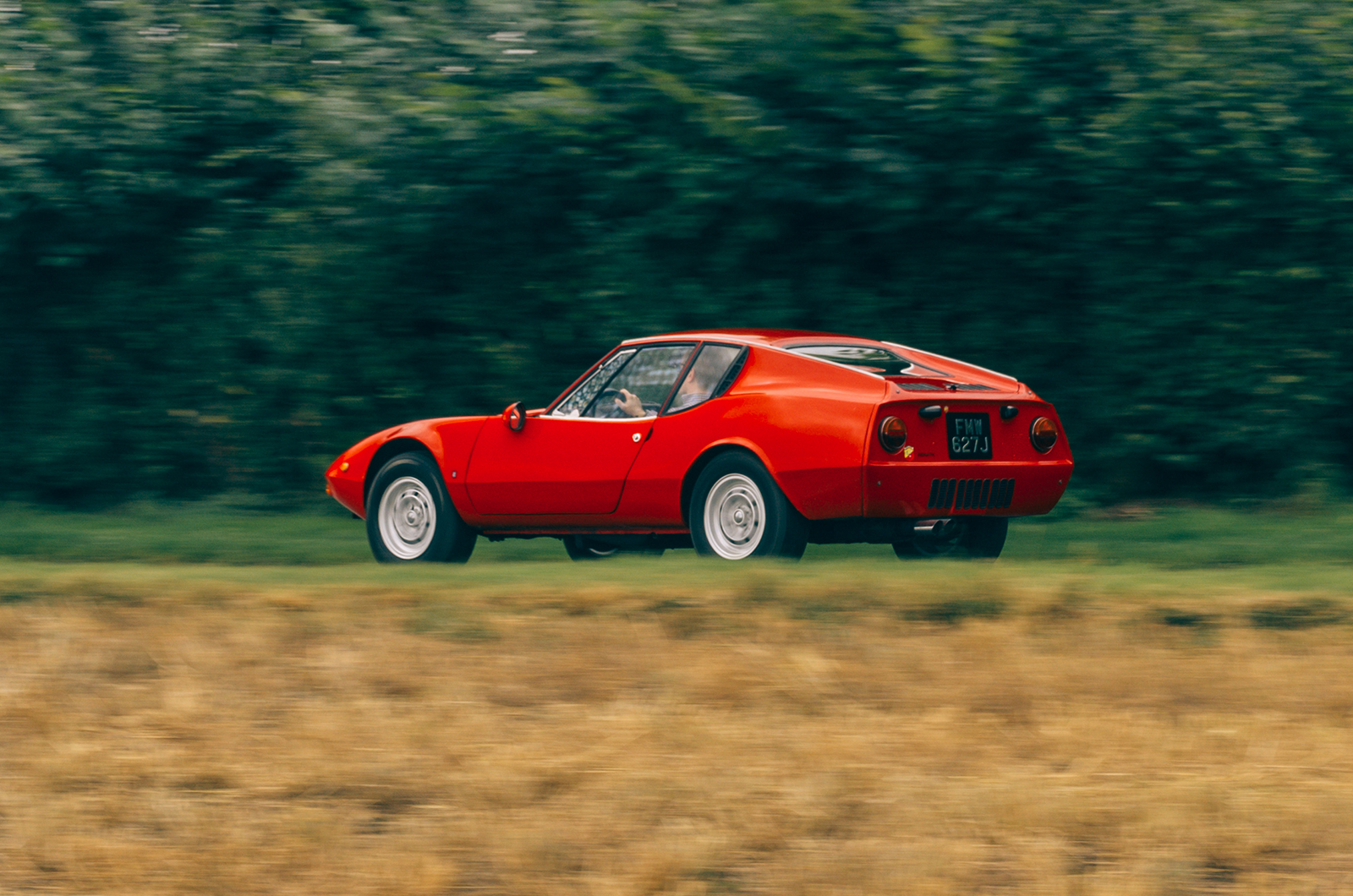Riding on optional cast-alloy Campagnolo wheels rather than steels, it looks striking but so… tiny. The Grand Prix stands just 1070mm (42in) off the deck.
Conversely, it isn’t cramped on the inside. Having threaded into the cabin, there is plenty of room for taller drivers.
That said, the half-horizontal seating position may take a little getting used to, but you cannot help but marvel at the angled dash with its Jaeger-made instruments, complete with Francis Lombardi logos.
The Lombardi’s cabin might be small, but it is still stylish
The only real compromise concerns the footwell. The wheelarch encroaches somewhat so the pedals – and, by association, your body – are orientated towards the centre of the car.
It isn’t that much of an issue, though; certainly not when compared to many other rear-engined machines.
The pedalbox assembly here is a standard Fiat 850 set-up, albeit mounted upside down and fixed to the floor.
Given the decidedly inclement conditions, spirited driving is out of the question. However, what is abundantly clear is that the Lombardi Grand Prix feels fast, not least because you’re seated so low.
“According to PR bumf it was good for 47bhp and 43lb ft; the car weighed only 625kg so 100mph was just about possible”
Just don’t expect centrifugal force to reshape your face and jowls because it is packing less than 50bhp.
The worm-and-roller steering works effectively, being sharp and direct, but then there is little weight up front. It’s never less than communicative.
As is to be expected, however, it isn’t exactly quiet. The compact and rev-happy Fiat 850 unit sings its little heart out at the rear, sounding decidedly rorty.
The gearchange snicks nicely between planes with a strong spring bias and, pleasingly, none of the rubbery shift action you get in some cars of this ilk.
Nor does it come as a surprise that the ride is on the firm side, but it isn’t of the bone-crunching variety.
Pop-up lights are a sign of the times
Prior experience of the model informs that it can get a bit skittish when pushed, while some care is required when scrubbing off speed because it is easy to lock the front wheels.
Visibility isn’t great, either, not least because the door mirror gives you a commanding view of the car’s flank and not much else.
Overall, though, the Grand Prix is huge fun to drive; it makes you smile before laughing out loud.
It’s the kind of car that leaves you feeling like a hero, the sensation of speed never being far away.
“It leaves you feeling like a hero”
For these reasons and more, it gets under your skin. It’s hard not to love.
There is something alchemical about the Lombardi; a rare combination of inventiveness and simplicity where the ordinary is somehow transformed into the stimulating.
It’s the sort of car that baffles as much as it bewitches, but then so does its backstory.
You could never accuse the Grand Prix of being boring.
Images: Olgun Kordal
Thanks to Andy Heywood
READ MORE
Why this charming Moretti 2300S leaves us wanting more
Fiat’s final champion: Fiat-Abarth 131 Stradale
Little gems: Alfa Romeo Giulietta Sprint vs MGA Twin-Cam vs Lotus Elite vs Porsche 356B
Richard Heseltine
Richard Heseltine is a long-time contributor to Classic & Sports Car
